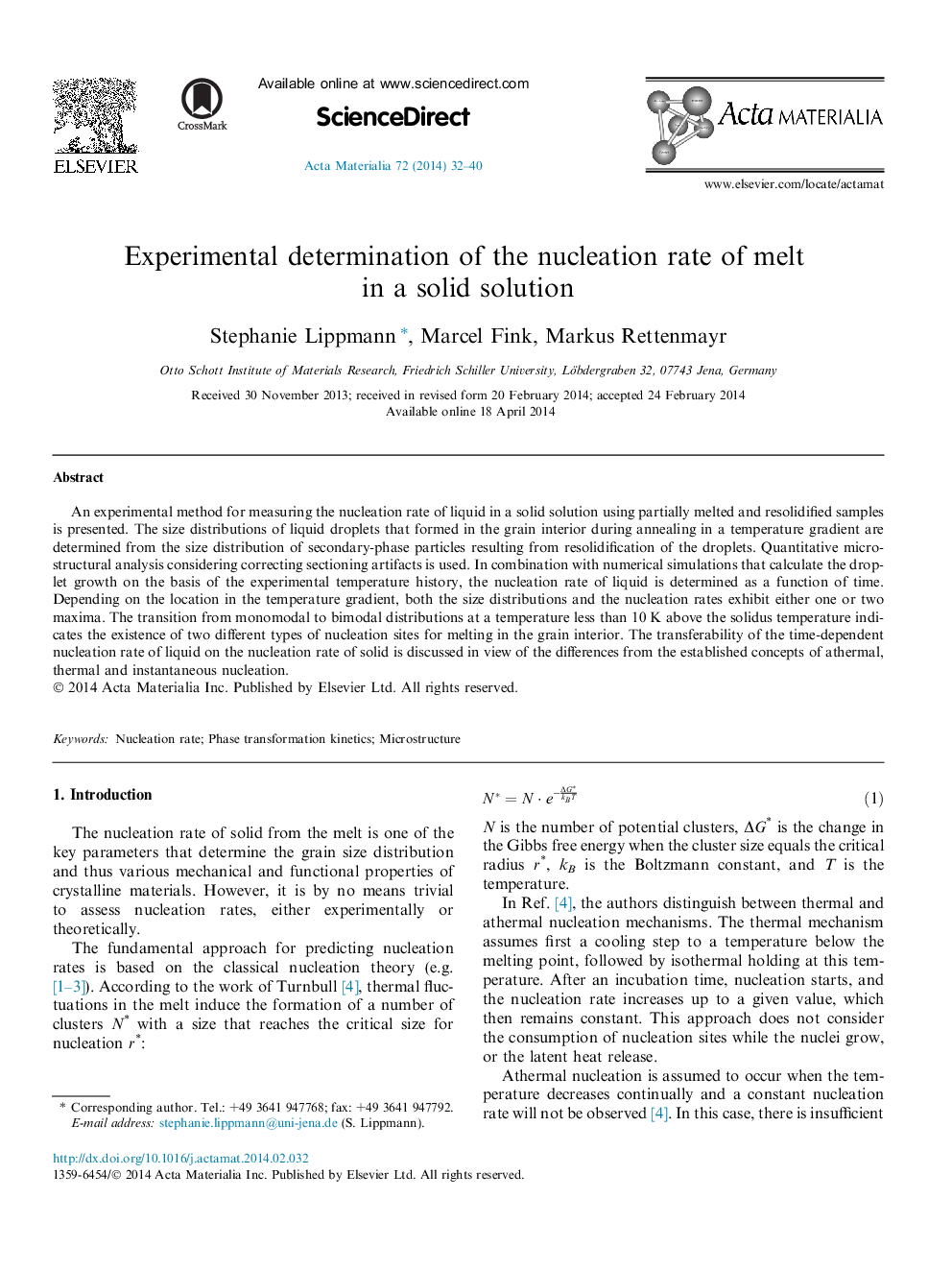| Article ID | Journal | Published Year | Pages | File Type |
|---|---|---|---|---|
| 7881820 | Acta Materialia | 2014 | 9 Pages |
Abstract
An experimental method for measuring the nucleation rate of liquid in a solid solution using partially melted and resolidified samples is presented. The size distributions of liquid droplets that formed in the grain interior during annealing in a temperature gradient are determined from the size distribution of secondary-phase particles resulting from resolidification of the droplets. Quantitative microstructural analysis considering correcting sectioning artifacts is used. In combination with numerical simulations that calculate the droplet growth on the basis of the experimental temperature history, the nucleation rate of liquid is determined as a function of time. Depending on the location in the temperature gradient, both the size distributions and the nucleation rates exhibit either one or two maxima. The transition from monomodal to bimodal distributions at a temperature less than 10Â K above the solidus temperature indicates the existence of two different types of nucleation sites for melting in the grain interior. The transferability of the time-dependent nucleation rate of liquid on the nucleation rate of solid is discussed in view of the differences from the established concepts of athermal, thermal and instantaneous nucleation.
Related Topics
Physical Sciences and Engineering
Materials Science
Ceramics and Composites
Authors
Stephanie Lippmann, Marcel Fink, Markus Rettenmayr,
